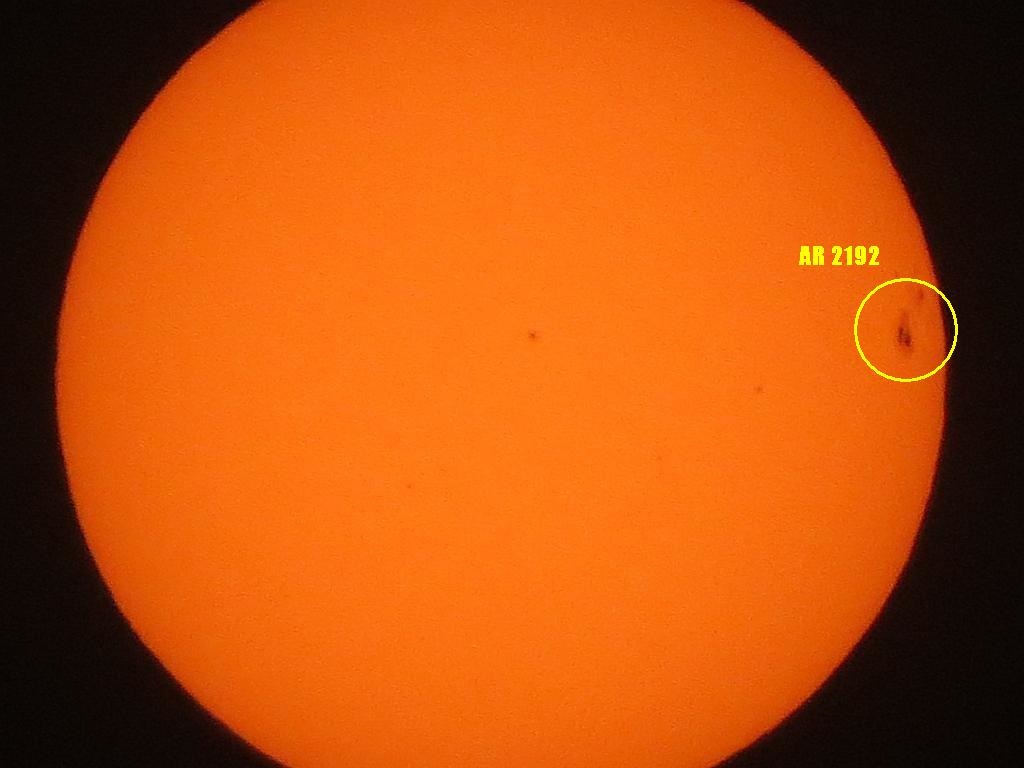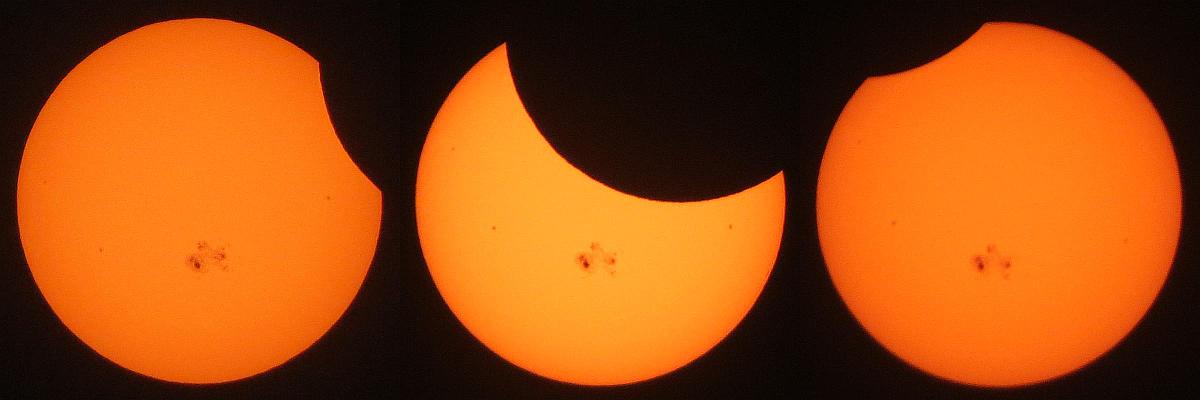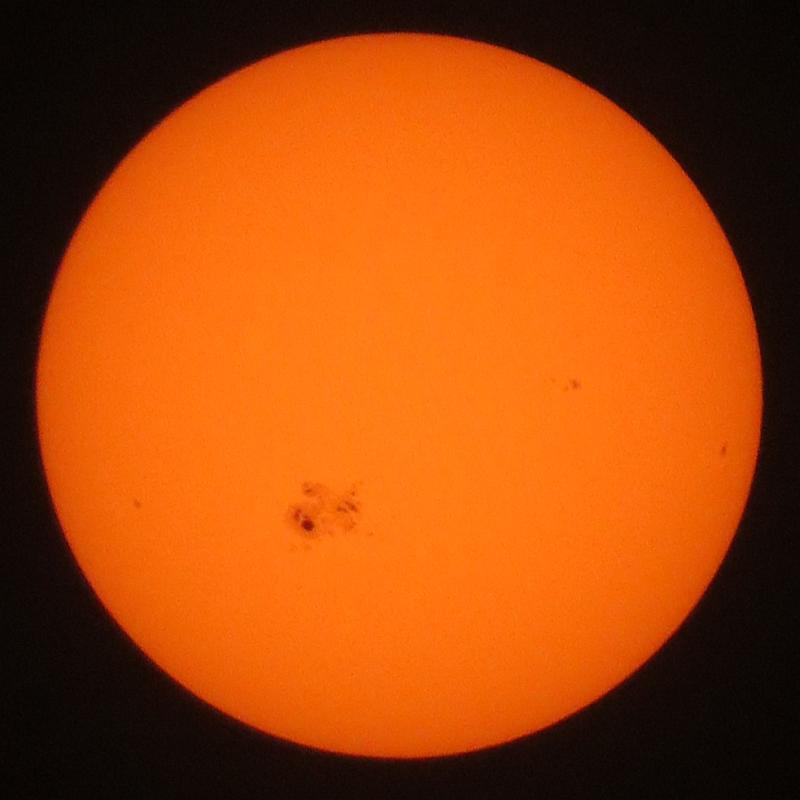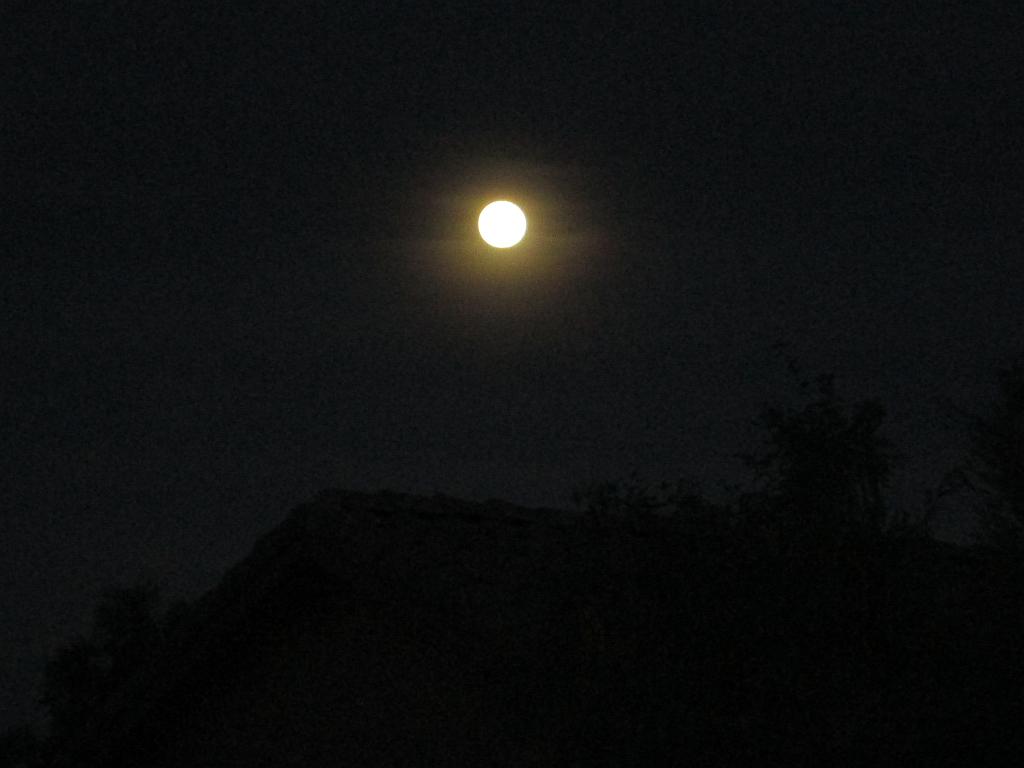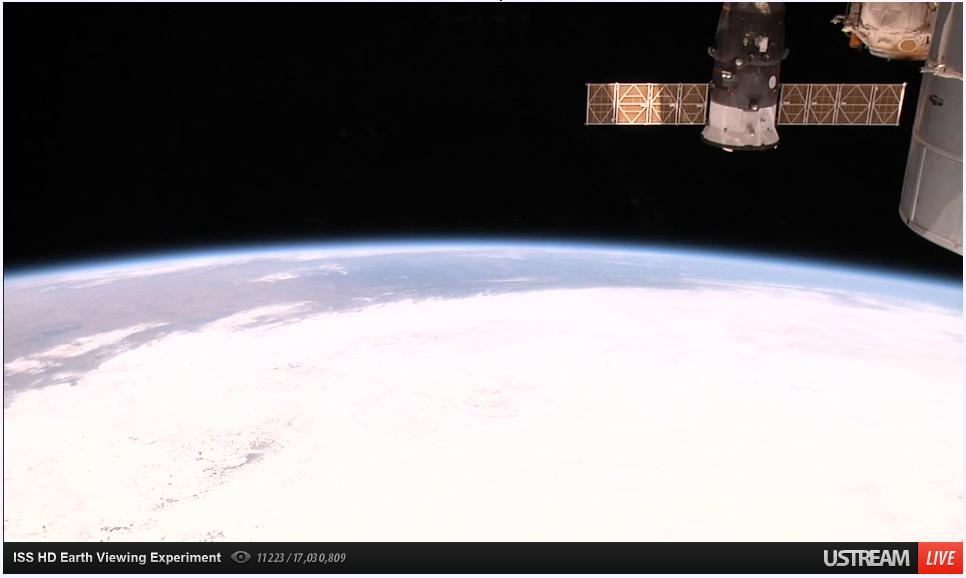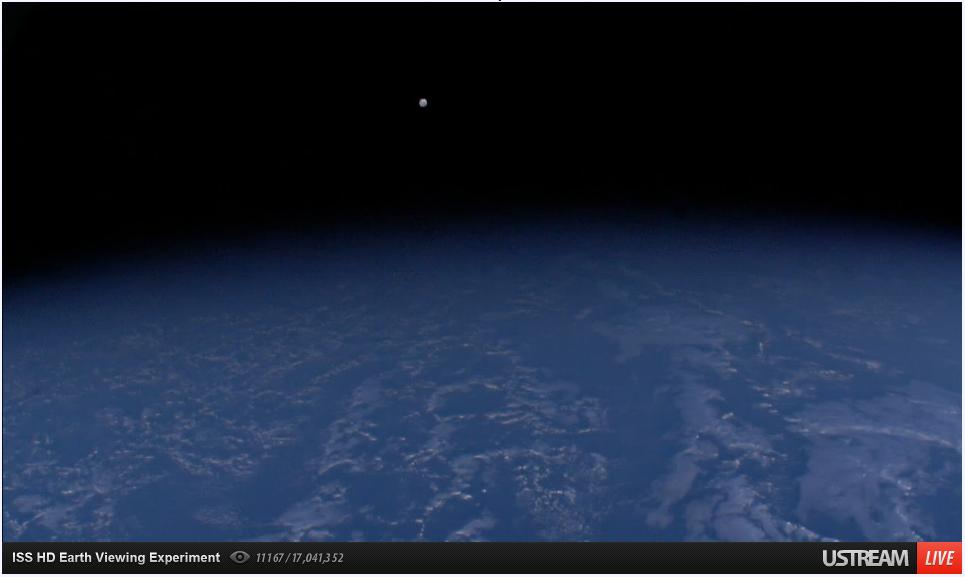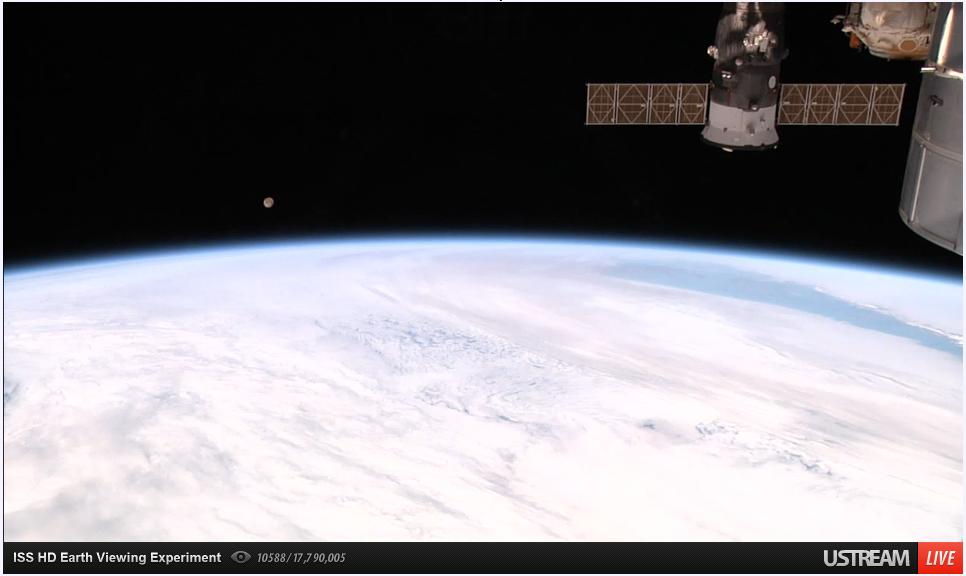I went out to the courtyard to photograph the last image of the great sunspot of 2014, AR 2192 before it rotates out of Earth view. According to the article below, there is a possibility of the spot to return to the Earth-facing side of the solar disk in a couple of weeks. Click on the image to enlarge.
From SpaceWeather.com:
SUPER-SUNSPOT PREPARES TO DEPART: The biggest sunspot in nearly 25 years is about to leave the solar disk.
. . .
As AR2192 approaches the sun’s horizon, it is no longer facing Earth. However, the odds of an Earth-directed radiation storm are higher than ever. The reason is, the western limb of the sun is well-connected to Earth. Solar magnetic fields springing out of that region spiral back to our planet. If a sunspot passing through the area explodes, those spiralling magnetic fields can funnel energetic particles in our direction.
In only a few days, the behemoth sunspot will begin a 2-week transit of the far side of the sun, carried around by the sun’s 27-day rotation. However, that doesn’t mean we’ve seen the last of this magnificent active region. Big sunspots typically persist for two or three solar rotations before they decay. After it leaves, AR2192 will return in November.

